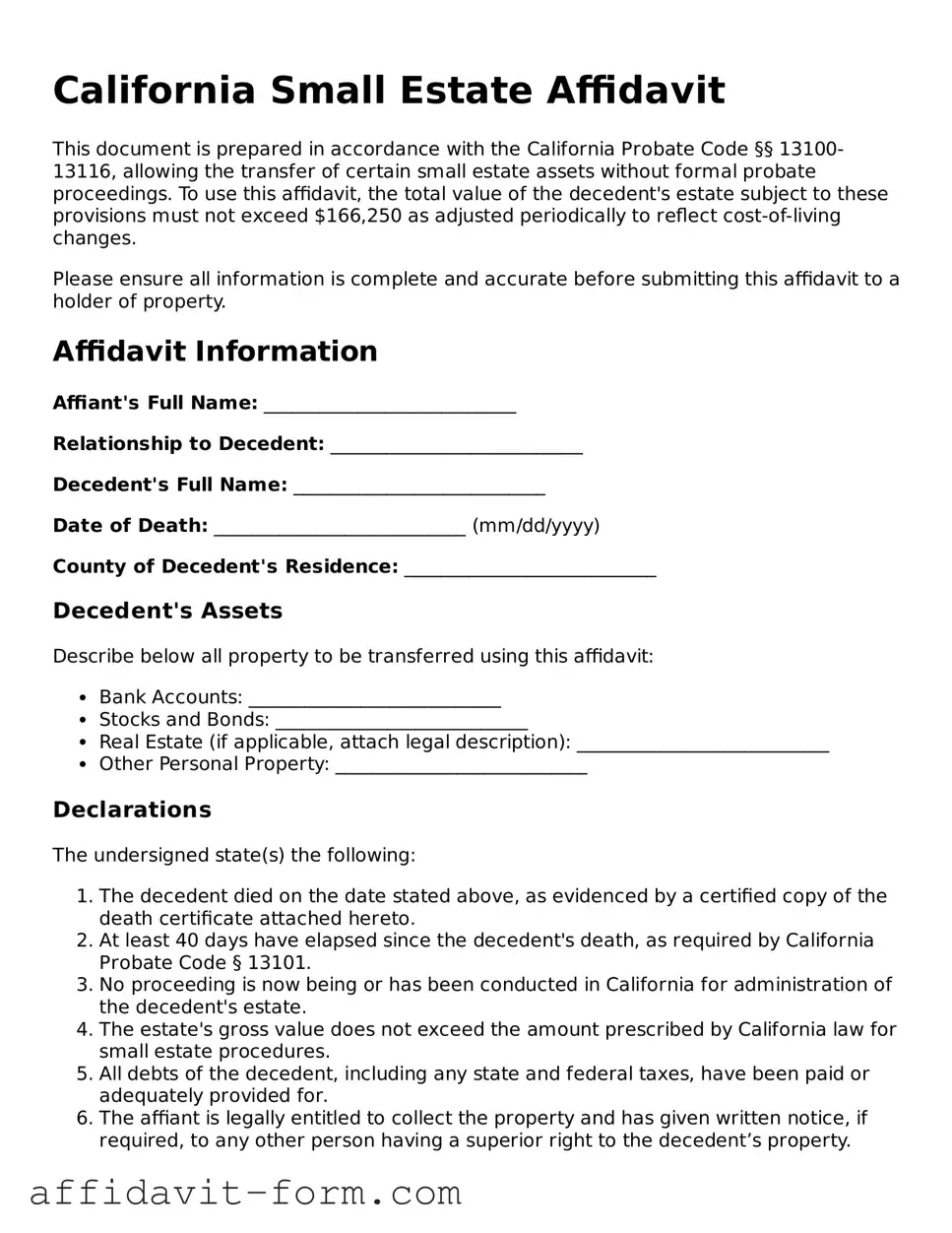California Small Estate Affidavit
This document is prepared in accordance with the California Probate Code §§ 13100-13116, allowing the transfer of certain small estate assets without formal probate proceedings. To use this affidavit, the total value of the decedent's estate subject to these provisions must not exceed $166,250 as adjusted periodically to reflect cost-of-living changes.
Please ensure all information is complete and accurate before submitting this affidavit to a holder of property.
Affidavit Information
Affiant's Full Name: ___________________________
Relationship to Decedent: ___________________________
Decedent's Full Name: ___________________________
Date of Death: ___________________________ (mm/dd/yyyy)
County of Decedent's Residence: ___________________________
Decedent's Assets
Describe below all property to be transferred using this affidavit:
- Bank Accounts: ___________________________
- Stocks and Bonds: ___________________________
- Real Estate (if applicable, attach legal description): ___________________________
- Other Personal Property: ___________________________
Declarations
The undersigned state(s) the following:
- The decedent died on the date stated above, as evidenced by a certified copy of the death certificate attached hereto.
- At least 40 days have elapsed since the decedent's death, as required by California Probate Code § 13101.
- No proceeding is now being or has been conducted in California for administration of the decedent's estate.
- The estate's gross value does not exceed the amount prescribed by California law for small estate procedures.
- All debts of the decedent, including any state and federal taxes, have been paid or adequately provided for.
- The affiant is legally entitled to collect the property and has given written notice, if required, to any other person having a superior right to the decedent’s property.
Acknowledgment
I, the undersigned, declare under penalty of perjury under the laws of the State of California that the foregoing is true and correct.
Executed on ________________________ (date) at ________________________, California.
Signature: ___________________________
Print Name: ___________________________
This document does not itself transfer the property. Instead, it must be presented to the entity currently holding the property (e.g., a bank or brokerage) along with any other required documents. Each entity may have its own additional requirements for transferring the property.
